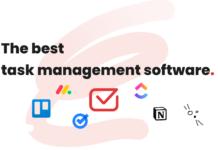
Businesses often have to deal with oceans of data to do their job. But it’s tricky when customer focus gets lost in all this data. That’s why it’s time to get back to focusing on the customer and not obsessing about data points. What really influences customer actions?
A Harvard Study shows that consumers’ purchases are driven mainly by emotion. That’s great because social media and online reviews are bursting at the seams with consumer-expressed emotions and feelings. But how do you quantify this treasure trove of emotion?
It is time to turn to the latest customer-centric tool: sentiment analysis. Just because emotions, feelings, or passions can be too hard to make sense of doesn’t mean it’s impossible. Sentiment analysis solutions provide the means to take a good crack at the problem.
What is Sentiment Analysis?
Sentimental analysis refers to AI techniques for extracting information from customers regarding their perception of products or brands. Using natural language processing (NLP) tools, it zeroes in on text data and determines the tone. It systematically combs customer feedback to extract and classify them as positive, negative, or neutral by employing algorithms. The outcome of this is the feeling, opinion, or attitude the person has towards an idea, brand, or product.
Known also as opinion mining, sentimental analysis looks like just what the doctor ordered for grasping and understanding emotions.
Emotions, attitudes, and opinions are somewhat elusive things to analyze. That’s because they are usually qualitative. Unlike quantitative items like income or age, they are tricky to pin down and measure. You can accurately measure people’s weights, assign numbers and rankings. But how do you do the same for disgust, bliss, or warm fuzzy feelings? Yet, this latter category of items are where most of the meaningful data lies. That’s because they hold fascinating insights which marketers need for understanding customers. Sentiment analysis digs into this world, breaks up the context, and gives us the answers we need.
Usage of Sentiment Analysis
- Brand Monitoring
Sources like comments sections on news sites, blog discussions and social media posts can provide information about how people feel about products or brands. Customers can influence each other’s buying decisions through the reviews they make. For example, products rated with 4 stars by customers give others a strong signal to buy. For this, companies need a brand monitoring tool that offers real-time tracking of consumers’ thoughts and feelings about them.
2. Track Feedback from Employees
Employees are the people you rely on to deliver on your promises to customers. Yet, a Gallup study showed that more than 85 percent of workers worldwide are disengaged at the workplace. This means they will tag along, but they don’t give their all to the organization due to job dissatisfaction. To figure out what employees’ feel and think, you need data—collecting and understanding that data will also need surveys and sentiment analysis to analyze and decipher the truth behind their words. This goes for the hiring process too. An example of an HR sentiment analysis tool is DeepSense AI. Created by Frrole, it uses social data to assess whether candidates were suited for job positions based on their traits and personalities.
3. Product Analysis
Companies need to know how well their products are performing. This includes existing products and new product launches. Using sentiment analysis, they can uncover hidden truths about the product. One way to do this is to apply sentiment analysis to customer reviews on online sources. One area where sentiment analysis trumps classical approaches focuses on context instead of just focusing on the words. For example, a user can make this comment: “Apple service is really slow. Great!” The word “great” is usually used as a compliment. But in this sentence, it’s the opposite because of the context.
4. Monitor Market Research
The use of sentiment analysis in market research remains crucial as ever. The same outcome sought with previous tools – using printed surveys, comment cards, focus on interest groups – is shared with today’s sentiment analysis. But this latest tool excels for its power to analyze vast quantities of data. This gives much better results about the market. It also does this faster which gives leeway for decisions to be made in good time.
5. Improving Customer Support
Perhaps your customers are happy with your products or services, and sentiment analysis shows customers handing out praise. But how do you keep your game up or even improve? Sentiment analysis employed over time can catch trends in feelings and opinions and even detect points where the tide is turning against you.
For example, sentiment analysis algorithms can process inbound tickets and rank them by urgency based on the tone of voice in emails. So agents can start serving the most dissatisfied customers first – which will have a bigger positive impact on the company than if all the emails are addressed without considering urgency.
6. Remain Competitive:
Companies can also use sentiment analysis to provide competitive intel. This is to find out what threats your competitors pose to your business. The aim is to do things better than your competition so that you can stay ahead. If customers are currently happy with a competitor’s services, how can you do better?
7. Crisis Management
In a crisis moment, sentiment analysis can help you stave off or climb out of a crisis. It can provide you with early monitoring or detect and stop situations before they become a full-blown crisis. For example, in identifying an unfolding crisis, the tool can give you insights such as how fast sentiments are shifting over time. It can also contextualize a crisis, looking at what came before it and what followed afterward. A key step that all brands should consider is to have a crisis communication plan. This prepares you for a social media crisis which can be crippling if not handled well. Bad news about your brand can go viral on social media and undoing it can be next to impossible.
Benefits of Sentiment Analysis for Business
Optimize Marketing Strategy: How can you know that your marketing strategy is working optimally? With sentiment analysis, you can continuously refine your marketing strategy so that it stays responsive to customers’ feelings or thoughts.
Improve Customer Service: Your brand or service is what the customer says it is. That is important because it’s easy to forget and want to listen internally. Sentiment analysis can give us a reality check so that we are in step with the customer. When that happens, it will be easy to give the customer the best experience.
Increasing Sales Revenue: Sentiment analysis helps you to identify what is positively perceived by customers so that you can continue that positive behavior. On the other hand, negative scores should be addressed by correcting the problem. Neutral scores should also be handled to turn them into positive scores. Happy customers return to your company and tell others about you!
Improve Media Perceptions: Media exposure can shape how your brand is perceived in the public eye and affect your business performance. Trends, news articles, and media can be analyzed to uncover important factors. This keeps you vigilant to come up with a strategy of always dealing with negative sentiments.
Conclusion
Staying ahead of your competition requires the use of business data analytics to survive challenging markets. Winning and retaining customer loyalty needs consistent customer support. Companies can use sentiment analysis tools to improve customer service and sales. This is based on knowing what your customers’ think about price increases, product launches, etc.
There is also a saying that in Twitter (and by extension, all social media), context is everything. Whether positive, negative, or neutral, consumer sentiments like mentions, tweets, or retweets take place within a context. Sentiment analysis gives marketers a tool to look at the big picture due to the power of context.
Sentiment analysis isn’t an exact science, but many experts rate it at 80 percent accurate through technology improvements. For example, they may not detect sarcasm or wit. However, this tool keeps getting better with time and exciting opportunities await businesses to maximize their brand.











